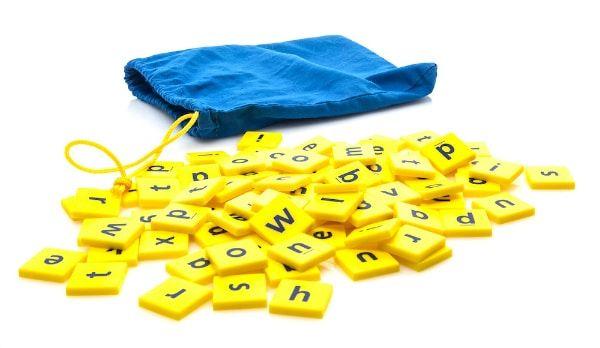I talk to lots of parents who are pulling their kids with dyslexia out of school and choosing to homeschool. They’ve done the research and have their ducks in a row but the actual day to day teaching is still a mystery. Because I’ve been homeschooling for so long, its easy to forget that they don’t have any idea what homeschooling kids with dyslexia really looks like.
What homeschooling kids with dyslexia doesn’t look like
Independence.
I can tell you this. If you’re homeschooling a houseful of kids with dyslexia, you won’t see kids sitting quietly at desks working independently – at least not for some time. Kids who struggle to read fluently, to spell, and sometimes to write, need a lot of support from their teacher – you!
So you won’t be handing them a textbook or a workbook much before middle school and be able to have them work on that independently. However, once you begin to experience the freedom in how you can teach as well as the unique ways in which kids with dyslexia actually learn, you probably won’t want to anyway.
Passive learning.
One of the unique strengths that is common to people with dyslexia is a high need to know why things are the way they are. Their curiosity makes it hard for them to sit passively and take in information. They want to think about it, talk about it, and to have what they are learning to have meaning to them. Random information won’t last long in weak short-term memory without some meaningful hooks to keep it there. This way of learning exists for a reason!
Traditional learning.
Homeschooling kids with dyslexia does not look much at all like a traditional school setting, nor do you want it to. If that method worked, we wouldn’t be homeschooling! Since completing worksheets, such as timed math fact practice sheets, doesn’t work for our kids, you won’t see much in the way of worksheets or lap books or other 2-dimensional activities.

What you may be seeing when homeschooling kids with dyslexia
Scaffolding.
Most of our learning takes place at our dining room table, or sitting on one of our living room couches. Kids are working within earshot of Mom (or Dad) so questions can be answered quickly. In the younger years, I am often scribing for my kids for math and composition. That means in order to get a lesson done without kids falling on the floor in frustration, I write or type for them – until they can write or type for themselves.
When do I expect them to be able to write or type? It’s different for every kid. For my son with profound dysgraphia (like he would rather eat nails than write) I let him dictate his papers while I type. He is learning to type with Touch-Type, Read and Spell (which we love). Since he is 11, I am aiming to have him either typing or using text-to-speech for his papers by the end of the year.
Connected learning.
If you’re in a rush and trying to check a bunch of things off your list each day, you may be disappointed. Happy kids are engaged kids. They like plenty of time to talk, discuss and share ideas.
To be honest, I’m still a work in progress with this. I’m a box checker and have to constantly check my motives. Is my goal to look good in co-op by finishing every assignment perfectly? Or is it to allow my kids to work and progress at their level and pace? I can usually tell if I’m off track by my stress levels and level of afternoon coffee consumption!
Our kids learn better when their learning is connected. For example, try studying Geography in relation to History and include literature from the time period as well. This way they are getting a 3-dimensional view that involves a variety of subjects on one topic.

Non-traditional learning.
Kids with dyslexia learn on a different trajectory than traditional learners and that timeframe is different for every child. Dyslexia can be either mild, moderate, or profound depending on the degree of auditory, visual, working memory, and executive function weakness your child has.
Kids with more profound dyslexia, need much more time and repetition and review for concepts to stick. For more on teaching the profoundly dyslexic child, read this.
Multi-sensory learning (learning that involves as many of the senses as possible at the same time) is of HUGE benefit for our kids. By using more areas of the brain to learn, the information sticks sooner. Some examples of multi-sensory learning are drawing letters in sand while saying their sounds, driving toy cars over letter cards while blending their sounds together, or hopping on letters cut from construction paper while saying the letter names, to practice site words. Or see this multi-sensory method of teaching site words.
Their top-down, give-me-the-big-picture-first style of learning requires a different style of teaching. An example of this is going to the library and getting a variety of picture books or highly illustrated books on subjects we will be covering, before we start. This gives my kids an idea of what we’re going to be learning and some hooks on which to hang the new info they will soon be receiving.
Remember: Outside the box learning requires outside the box teaching.
What does your homeschool look like? How is it different from the traditional school setting?

Related posts:
Getting Started Homeschooling With Dyslexia
Finding the Best Homeschool Curriculum for Kids With Dyslexia






This post was both extremely encouraging and challenging for me. I am a “box- checker” as well and it has been a chore to get me away from that habit. But going into our second year as a homeschool family with three boys, two of which show clear signs of dyslexia, I am starting to understand that there is freedom in the way my boys learn. (We started the testing process and we decided to stop after being told the oldest was clearly dyslexic. I figured I really didn’t want to waste time and money continuing, as I’ve been a teacher for 12 years and am very comfortable with getting the resources I need for them.) Thank you for blogging your experience and expertise!
It’s a journey for sure Karmen! You sound like you’re on a good path. 🙂
Do you have any suggestions for teaching kids with both low working memory and ADHD? Lessons that spark their entire interest or strengthen memory issues? Resources? I’m really struggling with this aspect of my teaching.
Hi Jennifer. I need to write more on that because we are going through the same struggles here every day! Here are a few posts and my class on Executive Function is FULL of ideas for how to help kids manage their time and belongings better.
https://dev.homeschoolingwithdyslexia.com/?s=adhd
https://dev.homeschoolingwithdyslexia.com/product/course-6-executive-function-teaching-your-dyslexic-child-to-organize-their-thoughts-personal-space-and-time/